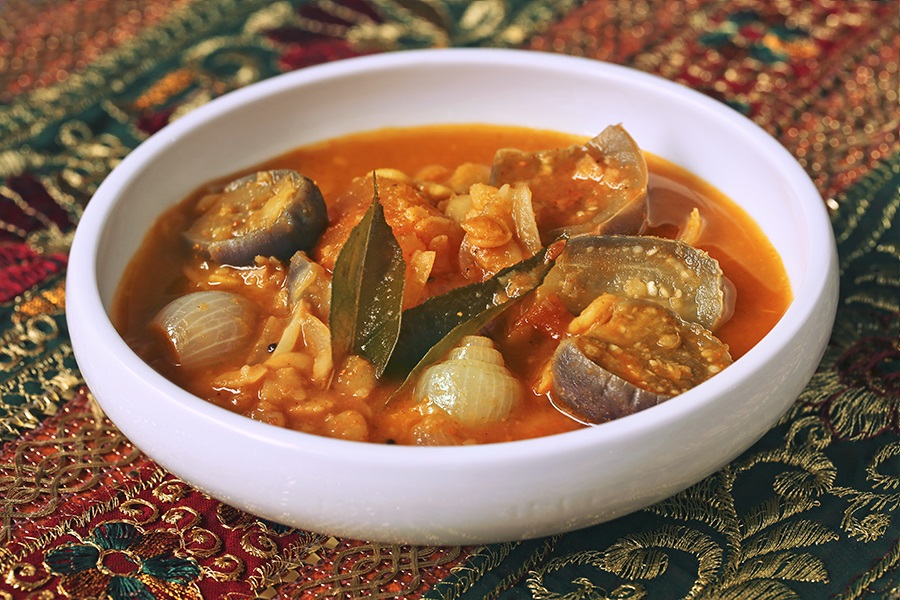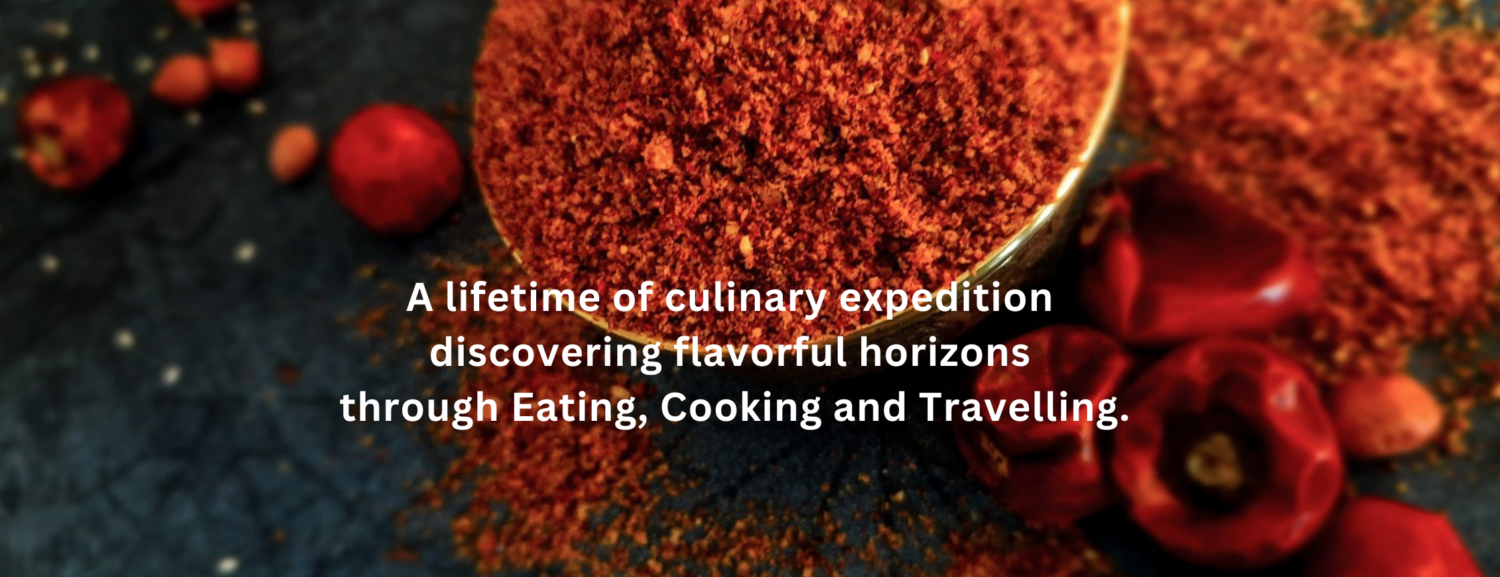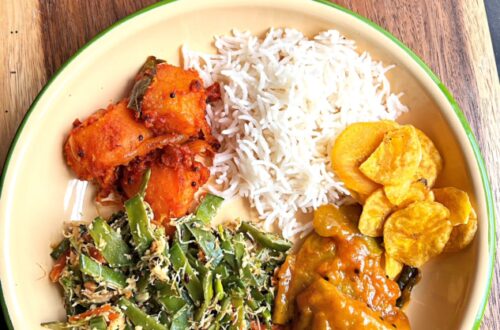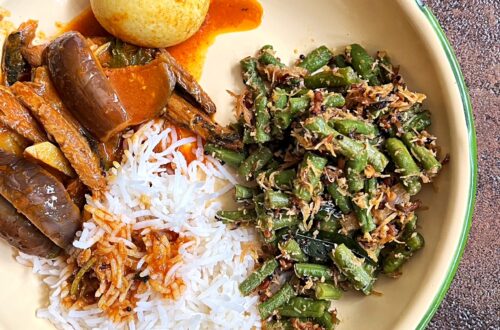
The Smell of Sambar
I love sambar. Hello, it is not a deer. Sambar is a curry with lots of lentils and vegetables. Yumyum…….. But which is the first sambar? Do you know anything about the history of sambar? I have eaten many types of sambar from the time I was a kid. My Periamah’s (mum’s older sister) sambar was so fragrant – She would grind the fennel, coriander seeds and cumin seeds in the ‘ammi’ or grinding stone and incorporate these into the boiling dhal. She used a firewood stove; the pot will be so black on the outside, and the interior is where one of the most delicious sambar would be boiling. My mother used to make her sambar quite thick, with lots of tur dhal; she would add a handful of mung dhal to thicken it as she said. We, Singaporean Indians hardly rely on the pressure cooker. The benefit of boiling dhal in a pot is that you get this aroma of the dhal and garlic wafting from the kitchen and permeating into every room of the house and the outside. The hunger will start about 1 hour before the sambar is made. An aunt used to add a touch of coconut milk to her sambar to ‘sweeten’ it as she said; another Malaysian Indian friend of mine would fry some pounded dried prawns and add to her keerai sambar……..Very delicious.
Then of course the vengaya (shallots) sambar of Saravana Bhavan in India is drinkable.
Nowadays, I see more of the restaurants using pumpkin pieces in their sambar, I think it is to sweeten the gravy naturally instead of using jaggery like some would do.
The sambar I once had at a railway station in Kerala is truly memorable too. Someone told me that it must be the Palagat brahmin’s way of sambar. Another friend of mine said he had a fantastic sambar in Coimbatore. He said the sambar was of blackish green (very unappetizing to look at it seems), but he also said that it was the best sambar he has ever had in his entire life. Apparently, a lot of ground coriander leaves and grilled onions were ground and added to the sambar. Sambar with radish and drumsticks ….mmmmmm mind blowing.
I love my sambar with lots of potatoes. When eating, I will mash the potatoes gently on my plate and pour the sambar over it, add a teaspoon of authentic ghee or butter and just eat. No need for rice! Or have a meal of hot sambar, fried dried fish and a vegetable poriyal.
My husband says a good sambar must be runny; I like it thick and so the argument about the best sambar never end as you may have something to say too.
200 g tur dal, washed and drained
1400 ml water
1 teaspoons ghee or cooking oil
5 garlic cloves
1 green chilli, slit lengthwise
2 medium potatoes, scrubbed clean and quartered
2 brinjals, cubed
2 tomatoes, quartered
2 drumsticks, cut into 4 cm pieces
1 medium radish, cut into 1 cm thick pieces
1 ½ teaspoons salt
3 tablespoons sambar powder
300 ml water
70 g tamarind mixed with 200 ml water and strained
2 tablespoons ghee or cooking oil
1 teaspoon mustard seeds
1 teaspoon cumin seeds
½ teaspoon fennel, pounded coarsely
1 medium onion, thinly sliced
2 sprigs curry leaves
2 tablespoons chopped coriander leaves
METHOD
- Put dhal, water, ghee, garlic cloves and green chilli into a pot and boil till the dhal is three-quarters cooked.
- Put all the vegetables, salt, sambar powder and water into the pot and boil till the potatoes are cooked.
- Add in tamarind water and boil for 5 minutes.
- Heat ghee in a separate pan.
- Fry the mustard, cumin and fennel seeds till aromatic.
- Add in the onion and curry leaves and sauté till onions turn golden brown.
- Transfer the fried ingredients to the boiling sambar. Add in the coriander leaves and boil for a further 2 minutes.
- Serve with rice, thosai or other staples.






